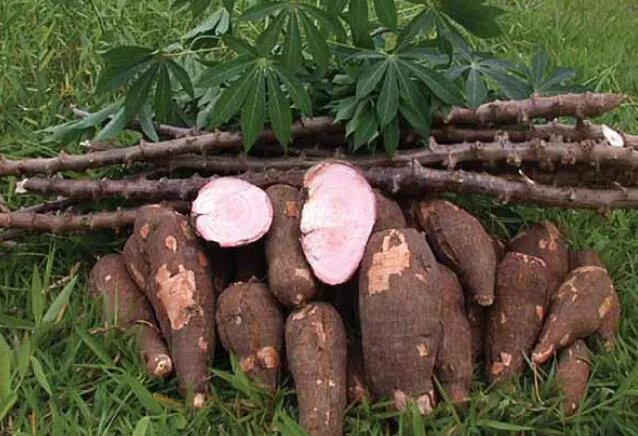Hello #Stemsocial platform! It's a new day and another time to give our contribution to the growth of the community. Good morning!

Today's post will focus on the nature of cassava toxin and how to detoxify into consumable product. It is very poisonous to feed on fresh cassava plants due to the toxicity of the product. This is why people who eat or feed animals with cassava products engage in some procedures before they can consume the product.
As the presence of cyanogenic glucosides constitute a major limitation to the use of cassava in both human and animal foods there is the need to review current findings for the elimination of the toxic glucoside in cassava products.
What is the Nature of Cassava Toxin?
Cassava is fed to livestock in the fresh or processed form. In the whole unbruised plant the cyanogenic glucoside remains intact in the form of linamarin and lotaustralin. When the cellular structure is disrupted, the intracellular glucoside becomes exposed to the extracellular enzyme linamarase. Hydrocyanic acid (HCN) is then produced. The reaction has been shown to proceed in two steps:
- Cyanogenic glucoside is degraded to sugar and cyanohydrin (x - hydroxynitrile);
- Cyanohydrin then dissociates to ketone and hydrocyanic acid. Thus, for linamarin the glucoside is first hydrolysed by linamarase to produce B-D-glucopyranose and 2 - hydroxyisolentyronotrite or acetone - cyanohydrin, after which the latter is degraded to acetone and HCN. Cyanohydrin produced as a result of linamarin activity is stable only under moderately acidic condition (pH 4.0); in neutral or alkaline condition it undergoes spontaneous hydrolysis to yield HCN.
How to Detoxify and Convert Perishable Fresh Cassava Roots into Stable Products
It is clear that eating fresh cassava is harmful to both humans and animals, so there are process or procedures to help reduce the cassava toxicity. The presence of the two cyanogenic glycosides, linamarin and lotaustralin, in cassava is a major factor limiting its use as food or feed. Traditional processing techniques practiced in cassava production are known to reduce cyanide in tubers and leaves. The specific effects of various processing techniques on the cyanide content of cassava are discussed below:
- Peeling: for cassava to become edible for humans the procedures for processing starts with the peeling. Peeling the cassava root has a great effect on the level of cyanide content. Also, the cassava peels have higher cyanide content than the pulp. The peel of the “bitter” cassava variety was shown to contain on average 650 ppm and the pulp to contain 310 ppm total cyanide; the corresponding values for “sweet” varieties were 200 ppm and 38 ppm respectively.
Peeling, therefore, can be an effective way to reduce the cyanide content by at least 50% in cassava tubers. However, it should be noted that while the peel contains a high glucoside content relative to the pulp, the glucosidase level is higher in the latter. - Soaking: This is another way to reduce the cyanide content in fresh cassava tubers. The presence of water helps to absorb the cyanide content. The process removes about 20% of the free cyanide in fresh root chips after 4 hours. This process precedes the fermentation process and it becomes more effective when the soaking water is routinely changed after 3-5 days.
Another pattern of soaking fresh cassava roots is through retting and this involves a prolonged soaking of the cassava root to effect the breakdown of tissues and the extraction of the starchy substance. A simulation of the technique, followed by sundrying showed a reduction of cyanide of about 98.6% of the initial content in the roots. - Boiling/Cooking: this is another very quick way of reducing the cyanide content in fresh cassava. The toxins in the fresh cassava cannot survive the heat at 75⁰C. About 90% of free cyanide is removed within 15 minutes of boiling fresh cassava chips, compared to a 55% reduction in bound cyanide after 25 minutes.
- Fermentation: The importance of fermentation in cassava processing is based on its ability to reduce the cyanogenic glucosides to relatively insignificant levels. Unlike alcoholic fermentation, the biochemistry and microbiology is only superficially understood, but it is believed that some cyanidrophilic/cyanide tolerant microorganisms effect breakdown of the cyanogenic glucoside.
Sources: